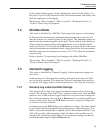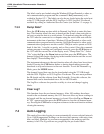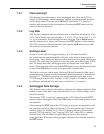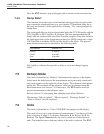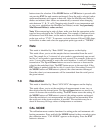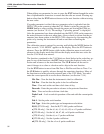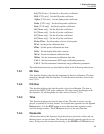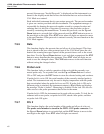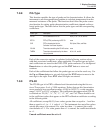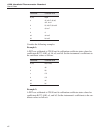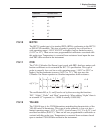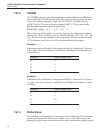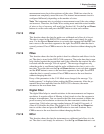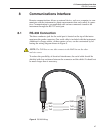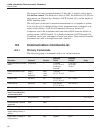
7.9.8 Prb Type
This function specifies the type of probe and its characterization. It allows the
instrument to use the appropriate algorithm to calculate temperature from the
measured resistance of the probe. The functions that follow the probe conver
-
sion function for setting probe characterization coefficients depend on the se
-
lected probe type. The table below lists the probe types and the corresponding
coefficients.
Probe Type Description Coefficients
ITS-90 PRTs calibrated to ITS-90 R(.01), a, b, c, d, a4, and b4
IEC751 PRTs (RTDs) conforming to IEC-751 none
CVD PRTs characterized by the
Callendar-Van Dusen equation
R0, Alpha, Delta, and Beta
YSI-400 Thermistors matching the YSI-400 series none
THERM Thermistors characterized by the therm
-
istor polynomial
b0, b1, b2, and b3
Each of the conversion options is explained in the following sections along
with their associated coefficients, when applicable. The probe type and associ-
ated coefficients are stored in the INFO-CON probe connector. Use the Up and
Down buttons to select the probe type and the ENT button to store and
continue.
Each of the coefficients that follow the probe type are set in the usual way. Use
the Up and Down buttons to set each digit and the ENT button to move to the
next digit to the right. Press ENT when all digits are entered.
7.9.9 ITS-90
The ITS-90 type is for PRTs calibrated and characterized using the Interna
-
tional Temperature Scale of 1990 equations. Probes that use this linearization
curve generally have excellent accuracy (0.005 to 0.025°C), a wide operating
range (–180°C to 420°C or higher). The coefficients that appear when ITS-90
is selected are “R(.01)”, “a”, “b”, “c”, “d”, “a4", and ”b4".These should be set
to the coefficient values that appear on the PRT calibration certificate according
to the following table.
All coefficients, except R(.01), have values greater than or equal to –1 and less
than or equal to +1, i.e. –1 ≤ value ≤ +1. The instrument does not allow values
outside this range to be entered. If a value less than –1 is entered, the coeffi
-
cient defaults to –1. If a value greater than +1 is entered, the coefficient defaults
to +1.
Unused coefficients must be set to 0.
41
7 Display Functions
CAL MODE



